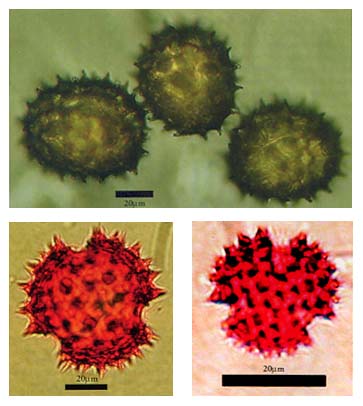Image Details

Vaughn Bryant
Testing the test. Reviewer Vaughn Bryant conducted his own sticky tape pulls. He obtained grains of Gundelia tournefortii from Israel and followed the same process Max Frei had used more than 20 years earlier. Bryant dusted some pollen onto a sheet of rag cotton paper (to mimic the material of the shroud) and used Scotch tape to pull the pollen from the surface. The picture at top shows what Gundelia tournefortii looks like under a light microscope. The three grains, covered in waxes and full of cytoplasm, appear very fuzzy and indistinct. The image at bottom left shows a grain of Gundelia tournefortii after it was chemically cleaned and stained red to show contrast. Bryant asserts that unless grains of pollen from the shroud undergo the same process and are studied by scanning electron microscopy—a more accurate tool than the simple light microscopy used by Frei and the authors of Flora of the Shroud of Turin—precise identification of the pollen is not possible. Indeed, Bryant writes, many pollen grains look very much alike, as shown by the photo at bottom right. This second pollen grain is of Chrysopsis, another plant in the sunflower family. All scale bars are 20 microns long.
